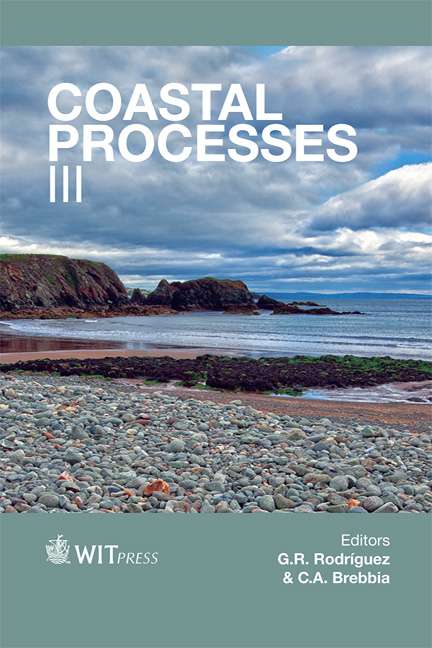Wind Driven Occurrence Of The Marine Dinoflagellate Alexandrium Tamarense In A Shallow Coastal Water
Price
Free (open access)
Transaction
Volume
169
Pages
12
Page Range
65 - 76
Published
2013
Size
401 kb
Paper DOI
10.2495/CP130061
Copyright
WIT Press
Author(s)
A. Murata & S. Taguchi
Abstract
Occurrence and bloom of dinoflagellate Alexandrium tamarense were examined with environmental factors at the central station in a semi-enclosed shallow bay during the period from 1992 to 2004. Vegetative cells of A. tamarense occurred distinctively between 70 and 141 Julian days every year. The maximum standing crop of A. tamarense, integrated for a water column (0 to 20 m), always occurred after the occurrence of maximum water density at the bottom layer which was formed by upwelled water from the outside of the bay. The maximum standing crop of A. tamarense ranged from 9.4 × 103 in 1999 to 3.0 × 106 cells m−2 in 1992. Winter standing stock of nutrients was not related with the variability in the standing crop of A. tamarense. Tidal change and speed were not identified to be related with the variability in the standing crop although the maximal tidal change was almost 4 m due to the physical structure of the bay. When a water column was well mixed and water stability was the minimum of 0.0155 σt m−1 as observed in 1999, the standing crop of A. tamarense was exceptionally suppressed. The variability in the standing crop was significantly related with the wind exposure (m2 s−1) estimated from the fetch (m) and wind velocity (m s−1) from North ± 45o directions (p < 0.01). The size of standing crop might be controlled by the physical force. Alexandrium tamarense may take a survival strategy to utilize (1) the upwelling as a stirring-up mechanism for resting cysts from the bottom sediments, (2) the stratification of water column to sustain cell division, and (3) wind exposure to enhance the accumulation of cells. Keywords: N:P ratio, regenerated nutrients, toxin, wind exposure, water stability.
Keywords
N:P ratio, regenerated nutrients, toxin, wind exposure, water stability.





